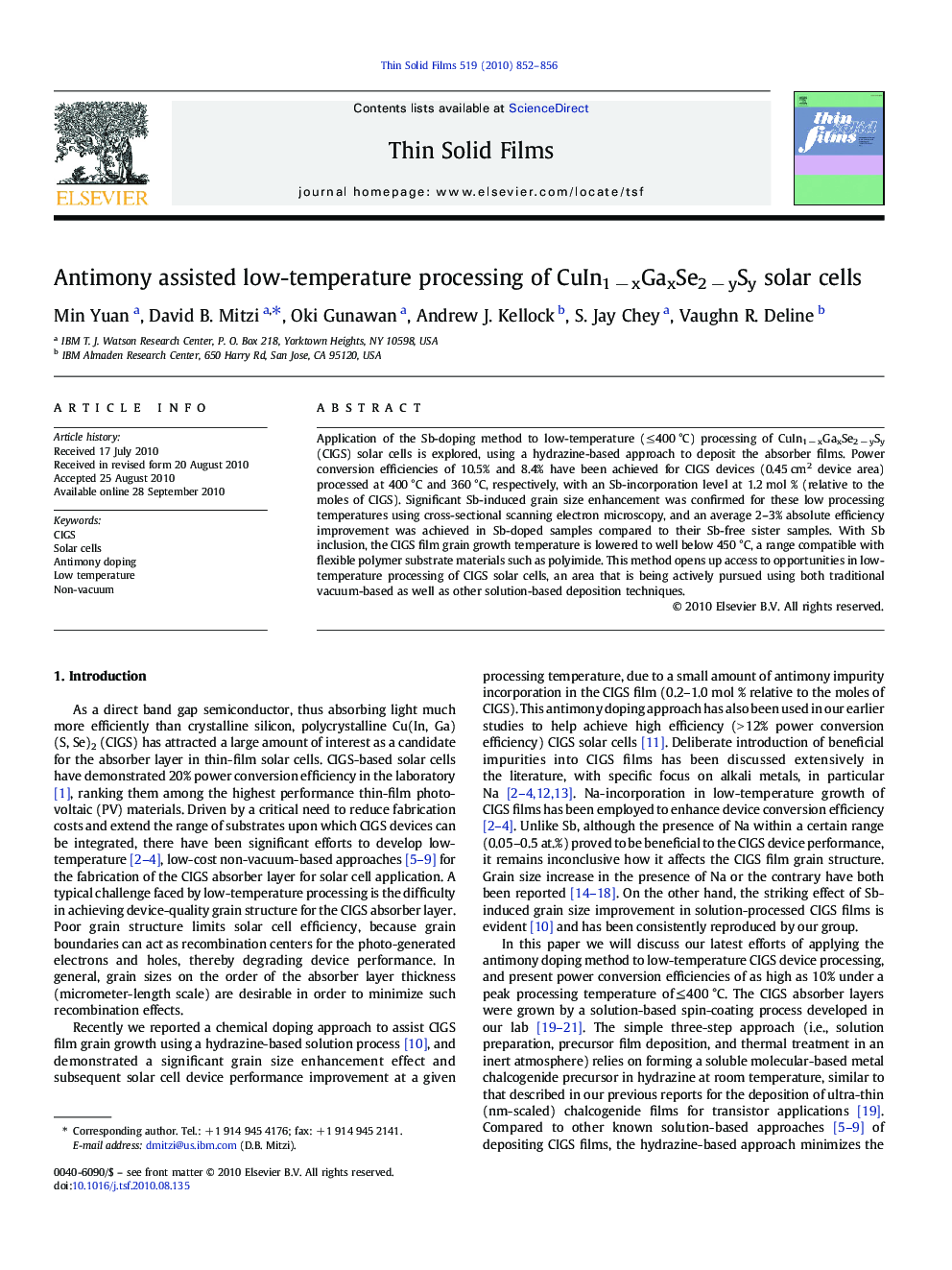| Article ID | Journal | Published Year | Pages | File Type |
|---|---|---|---|---|
| 1668742 | Thin Solid Films | 2010 | 5 Pages |
Application of the Sb-doping method to low-temperature (≤ 400 °C) processing of CuIn1 − xGaxSe2 − ySy (CIGS) solar cells is explored, using a hydrazine-based approach to deposit the absorber films. Power conversion efficiencies of 10.5% and 8.4% have been achieved for CIGS devices (0.45 cm2 device area) processed at 400 °C and 360 °C, respectively, with an Sb-incorporation level at 1.2 mol % (relative to the moles of CIGS). Significant Sb-induced grain size enhancement was confirmed for these low processing temperatures using cross-sectional scanning electron microscopy, and an average 2–3% absolute efficiency improvement was achieved in Sb-doped samples compared to their Sb-free sister samples. With Sb inclusion, the CIGS film grain growth temperature is lowered to well below 450 °C, a range compatible with flexible polymer substrate materials such as polyimide. This method opens up access to opportunities in low-temperature processing of CIGS solar cells, an area that is being actively pursued using both traditional vacuum-based as well as other solution-based deposition techniques.
